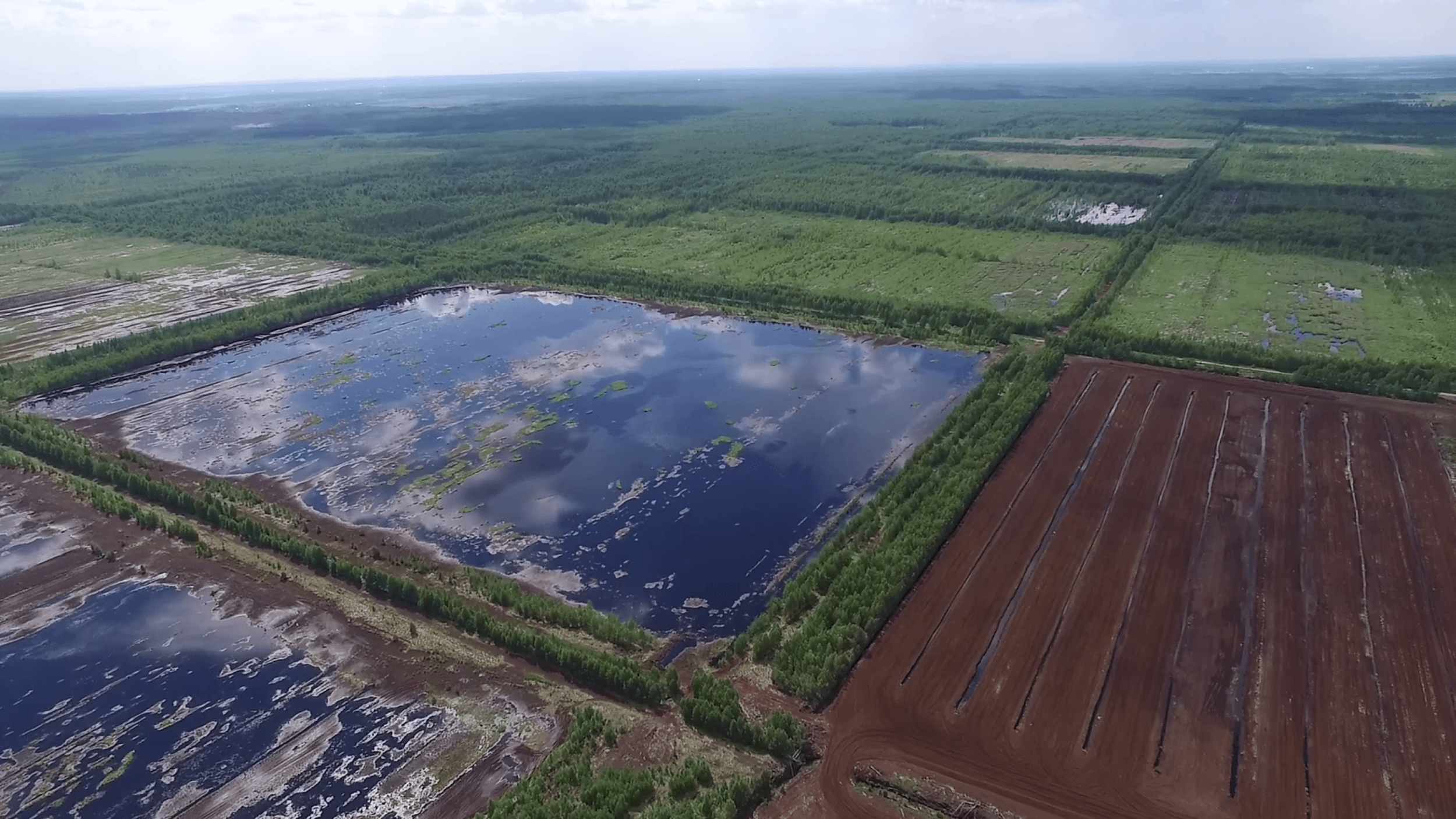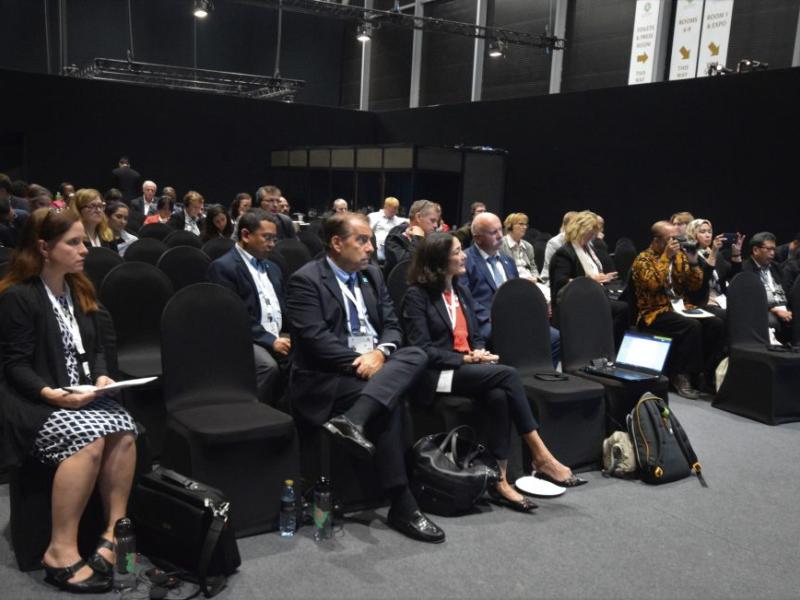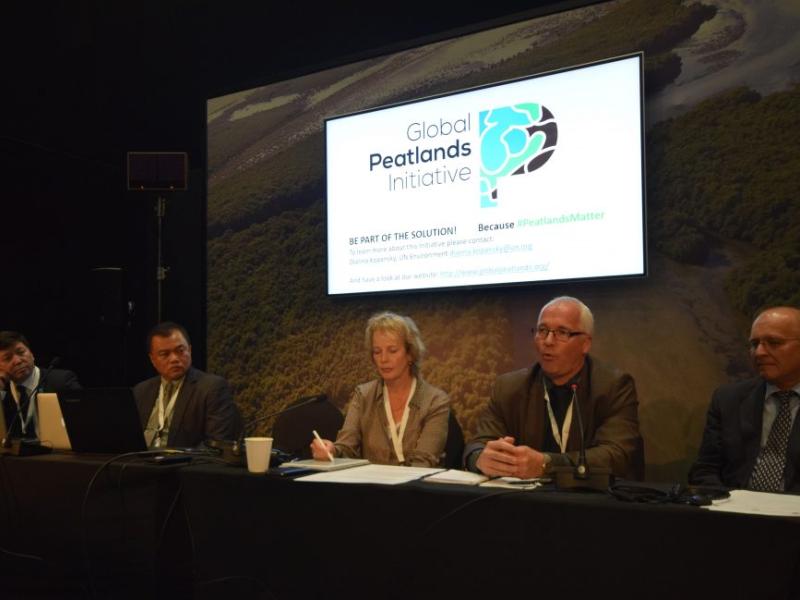
Ramsar COP13 Side Event: Towards a joint peatland declaration: MEAs answer to reverse the trend on peatland degradation
The Global Peatlands Initiative brought peatlands into the spotlight at the Ramsar COP13, hosting a collaborative side event on Wednesday 24th October that highlighted the ecosystems as a wetland of global significance.
Peatlands are unique ecosystems that offer important ecosystem services such as carbon sequestration, biodiversity conservation, water supply and purification, atmospheric cooling, flood prevention, biomass production for food and others. The services peatlands provide are globally and locally
relevant both for urban and rural areas. Peatland conservation, restoration, wise use and management can be realized and supported by different Multilateral Environmental Agreements (MEAs).
To strengthen synergies and amplify efforts to maintain and restore ecosystem services of peatlands, the Ramsar Convention, UNCCD, UNCBD and UNFCCC are looking at how to work together on a joint declaration. The exchange between Contracting Parties and technical experts will inform and inspire how stakeholders can work together to include peatland measures in SDG implementation, Nationally Determined Contributions, National Action Plans for Disaster Risk Reduction etc.
Contracting parties, leading environmental organisations and some relevant MEA Secretariats discussed priorities and a potential pathway for the development and implementation of such a peatland focused declaration. Highlighting global efforts such as the Global Peatlands Initiative and commitments such as the Brazzaville
Declaration on Peatlands, panelists and participants shared their knowledge on the role of peatlands for climate change mitigation and adaptation, flood prevention, providing drinking water, housing biodiversity and also shared the links to urban health and human wellbeing in general.
Co-organized by UN Environment, Wetlands International and the German Federal Agency for Nature Conservation, the side event was moderated by Jane Madgwick, Chief Executive Officer of Wetlands International, and the expert panel included:
- Frank Barsch, Ministry of Environment and NuclearSafety, Federal Republic of Germany
- Ir. Tandya Tjahjana, MSi, Director EssentialEcosystem Management, Directorate General Conservation and Ecosystem Resources,Ministry of Environment and Forestry, Indonesia
- N. Battulga Н., Director Division of Water BasinManagement, Mongolian Ministry of the Environment and Tourism
- Andrey Sirin, STRP Focal point in RussianFederation, Director of the Centre of Peatland Restoration and Research, RussianFederation
- Martha Rojas Urrego,Secretary General Ramsar Convention
- Lisa Janishevski, CBD Secretariat
- Monique Barbut , SecretaryGeneral UNCCD (video message)
A full house for the session resulted in a rich dialogue with contributions from Austria, South Africa, Convention on Migratory Species, UN Environment and other international experts and urging support for the next steps towards a joint peatland declaration amongst the MEA’s. The primary parties agreed to take the discussion forward at other international events such as the UNFCCC COP 24 in Katowice, Poland so that the collaboration is in response to countries needs and reflects their experience of implementation of programmatic synergies on the ground.


Other important highlights from the Ramsar COP13 include the adoption by the Parties of two resolutions on peatland, namely, final Resolution XIII.12: “Guidance on identifying peatlands as Wetlands of International Importance (Ramsar Sites) for global climate change regulation as an additional argument to existing Ramsar criteria” (COP13 Doc.18.13 Rev.1) and final Resolution XIII.13: “Restoration of degraded peatlands to mitigate and adapt to climate change and enhance biodiversity and disaster risk reduction” (COP13 Doc.18.14 Rev.1).
For further reading on the proceedings of the Ramsar COP13 including on the peatlands resolutions, see the IISD Reporting Services coverage and the final resolution texts on the Ramsar website.